SPONSORED CONTENT IN PARTNERSHIP WITH DTEK
Ukraine's Most Promising Sectors for Investors

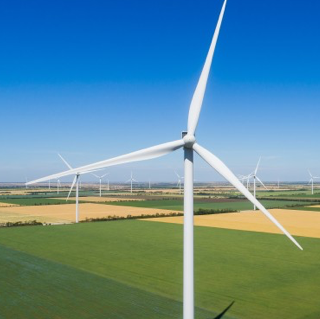
In recent years Ukraine's economy has delivered a strong turnaround – going from almost 7 percent contraction in 2014 to over 3 percent growth last year.
Its highly educated workforce, vast and fertile lands, developed industrial infrastructure and low cost base make Ukraine a desirable location for businesses targeting the European or Middle Eastern markets.
Ukraine's recovery builds on a wide-scale transformation, perhaps best illustrated by progress in the World Bank's Ease of Doing Business rankings. Ukraine went from 142nd a decade ago to 71st in 2019. Once current presidential and parliamentary electoral uncertainties abate, "growth can recover to 4 percent in the medium term," reads the 2019 World Bank report.
"Savvy investors recognize the ground-floor opportunity that Ukraine offers, powered by its competitive advantages in brains, hands and grains," Lenna Koszarny, CEO of private equity firm Horizon Capital, told the FT in an interview.
A look at capital investment flows, typically a marker of longer-term commitment, helps to show what areas pulled Ukraine's economy forward – and will continue to drive growth in the future.
Comparing 3-year average growth rates for the 2016-2018 period shows five large sectors that drove the recovery, as well as five smaller but fast-growing sectors that can help sustain dynamism going forward.
Ukraine's recovery builds on a wide-scale transformation, perhaps best illustrated by progress in the World Bank's Ease of Doing Business rankings. Ukraine went from 142nd a decade ago to 71st in 2019. Once current presidential and parliamentary electoral uncertainties abate, "growth can recover to 4 percent in the medium term," reads the 2019 World Bank report.
"Savvy investors recognize the ground-floor opportunity that Ukraine offers, powered by its competitive advantages in brains, hands and grains," Lenna Koszarny, CEO of private equity firm Horizon Capital, told the FT in an interview.
A look at capital investment flows, typically a marker of longer-term commitment, helps to show what areas pulled Ukraine's economy forward – and will continue to drive growth in the future.
Comparing 3-year average growth rates for the 2016-2018 period shows five large sectors that drove the recovery, as well as five smaller but fast-growing sectors that can help sustain dynamism going forward.
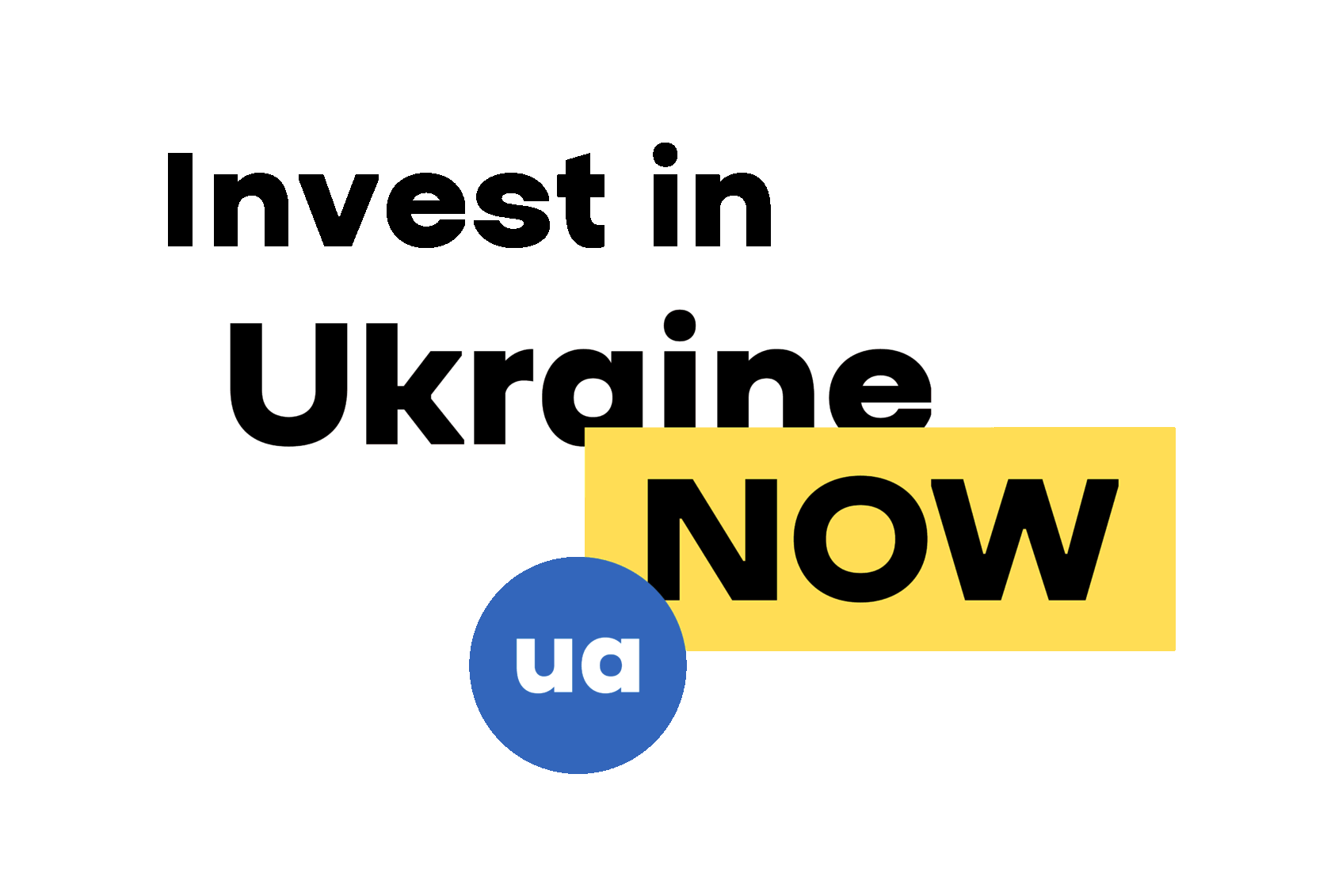
Manufacturing
Agricultural
business
business
Energy (incl. gas & alternative energy)
Defence & Aerospace
Retail *
24
%
30
%
34
%
43
%
51
%
1
2
9.1
bn
$
12.3
bn
$
15.6
bn
$
6.1
bn
$
5.5
bn
$
1
2
Key:
Growth of capital investments (3-year average, %)
Sector size (2018 GDP contribution or market revenues, depending in relevance, bilion USD
* Focus on FMCG (excluding all car and auto-industry related retail and wholesale)
Source: UkrStat, PwC, Deloitte, Concorde
Five Sectors Driving Growth

Energy
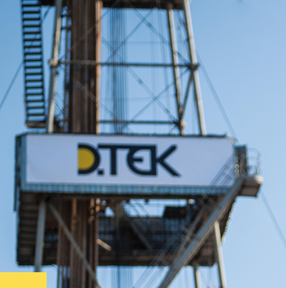


Few industries have seen as profound a transformation since 2014 as Ukraine's energy sector. On the gas front, the country has boosted local production, eliminated Russian gas imports and carried out profound reforms. In turn, electricity generation and supply has gone through its own transform, driving big gains in efficiency and sustaining the growth of alternative energy.
Dating back to Soviet times, Ukraine's complex of gas storage facilities is one of the largest in the world, while its pipelines play a key role in bringing post-Soviet gas to Europe. Unfortunately, subsidized energy prices, poor management and corruption meant the country was one of the world's least energy-efficient before 2014, according analyses by the US Energy Information Agency.
But while gas has historically dominated Ukraine's energy sector (and energy security concerns) the last five years have seen its significance fade. The nation's gas consumption was as high as 76 billion cubic meters still in the early 2000s. However, the removal of gas subsidies has changed the picture. In 2018, consumption was down to 32 billion cubic meters – all of which was supplied from Europe or came from domestic production.
Nonetheless the road to energy efficiency remains long. Cross-subsidies persist in electricity generation. Moreover, despite public programs aimed at reducing wasteful energy use, such as installing heat or hot water meters, Ukraine spent a whopping 70 times more on utilities than energy efficiency in 2016, according to a report by think tank Carnegie Europe.
The brightest spot on the map is alternative or renewable energy, with wind, solar and biomass all showing promise and attracting international investments. National investment agency Invest Ukraine forecasts see these going as high as $18 billion by 2020, notably driven by green tariffs meant to increase renewables in the energy mix, from the current 2.6 percent to 25 percent by 2035. Just in 2019, power company Ukrenergo estimates renewable capacity will double from 1.5 to 3 gigawatts.
DTEK, Ukraine's largest energy holding, has been particularly active in the field. Recent investments include the construction of new wind farms for which DTEK raised EUR 335 million from German banks, followed a more recent EUR 134 million deal with Chinese company CMEC.
"It is important to work on new legislation on renewables and switch from feed-in-tariff to a new auction system, the way it is done in EU. DTEK participates in various working groups aimed at elaborating this new approach and turn it into legislation. The industry will only benefit if we bring our legislation on RES in line with the EU trends" commented Maxim Timchenko, DTEK's CEO.
But while gas has historically dominated Ukraine's energy sector (and energy security concerns) the last five years have seen its significance fade. The nation's gas consumption was as high as 76 billion cubic meters still in the early 2000s. However, the removal of gas subsidies has changed the picture. In 2018, consumption was down to 32 billion cubic meters – all of which was supplied from Europe or came from domestic production.
Nonetheless the road to energy efficiency remains long. Cross-subsidies persist in electricity generation. Moreover, despite public programs aimed at reducing wasteful energy use, such as installing heat or hot water meters, Ukraine spent a whopping 70 times more on utilities than energy efficiency in 2016, according to a report by think tank Carnegie Europe.
The brightest spot on the map is alternative or renewable energy, with wind, solar and biomass all showing promise and attracting international investments. National investment agency Invest Ukraine forecasts see these going as high as $18 billion by 2020, notably driven by green tariffs meant to increase renewables in the energy mix, from the current 2.6 percent to 25 percent by 2035. Just in 2019, power company Ukrenergo estimates renewable capacity will double from 1.5 to 3 gigawatts.
DTEK, Ukraine's largest energy holding, has been particularly active in the field. Recent investments include the construction of new wind farms for which DTEK raised EUR 335 million from German banks, followed a more recent EUR 134 million deal with Chinese company CMEC.
"It is important to work on new legislation on renewables and switch from feed-in-tariff to a new auction system, the way it is done in EU. DTEK participates in various working groups aimed at elaborating this new approach and turn it into legislation. The industry will only benefit if we bring our legislation on RES in line with the EU trends" commented Maxim Timchenko, DTEK's CEO.

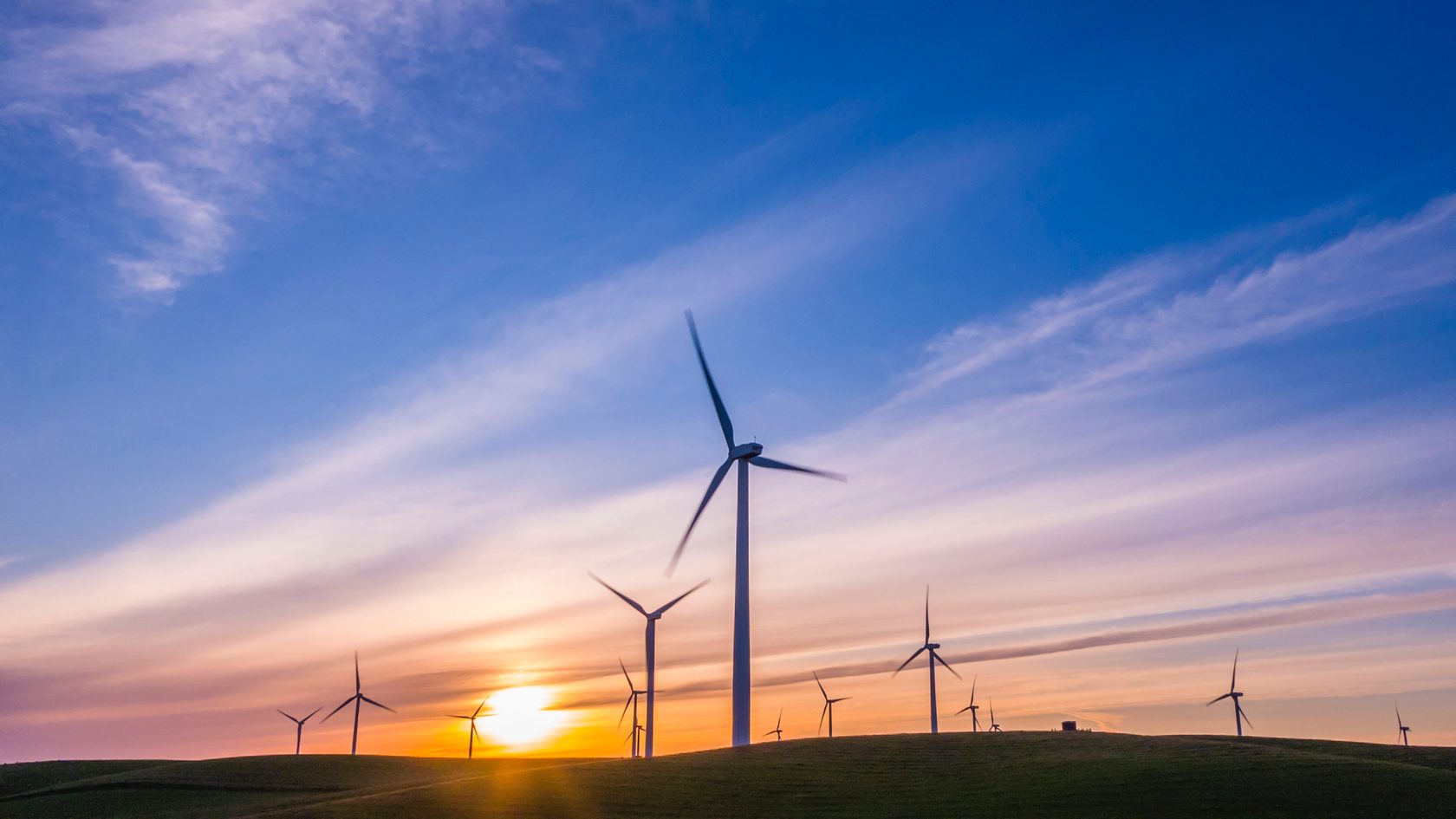

Agricultural
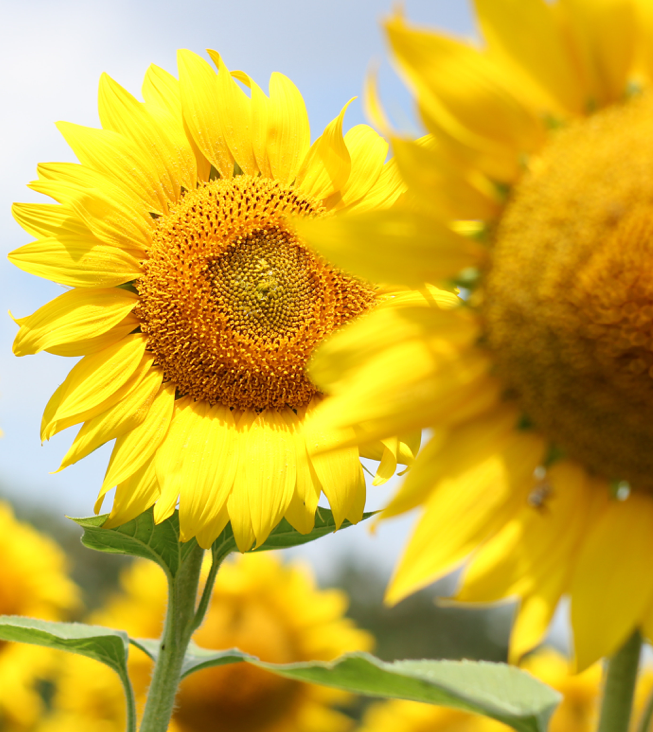
Ukraine's traditional heavyweight agriculture and agribusiness sector continues to drive growth as the country invests in new technologies to boost yields and conquer new export markets. The country further consolidated its strong international position in 2018, bringing in a record 70 million tons of grains harvested, although persistent challenges, particularly concerning land sales, are holding back even stronger results.
Home to some of the world's most fertile lands, Ukraine is a key player in such crops as corn and wheat, in addition to being the largest in sunflower oil producer, accounting for close to a third of global output. Ukraine also makes the top ten lists in terms of poultry, milk and egg products, and dominates the world honey scene.
The expansion into new markets has been a key driver of growth – particularly to Middle Eastern and Asian countries that lack local production and want to diversify supplies. Total exports in recent years have topped $17 billion, with growth in Asia, which has gone from accounting for 33 percent of exports in 2010 to 45 percent in 2017, according to the Ukrainian Agribusiness Club, and Europe (up from 20 percent to 32 percent, respectively) compensating for a drop in CIS markets.
This has led to both investments into infrastructure, as with Korea's Posco Daewoo's purchase of 75 percent of the Mykolaiv port grain terminal for an estimated $60-75 million in 2018, as well as into related fields, as with the recent $1.5 million investment by agro-holding Cygnet into a tractor park. In some cases, foreign investment has targeted agricultural holdings themselves, as with the Saudi Agriculture and Livestock Investment Company's acquisition of Mriya, one of the top-ten largest agricultural enterprises by land bank.
The biggest obstacle to unlocking even greater investments is a moratorium on land sales, which continues to be blocked by the legislative branch for almost two decades now. As a result, the market for agricultural land is virtually non-existent, and renting land from private owners or the state remains the only way to build an agribusiness company. Rental rates vary in the 8 to 14 percent, with public land set the lower end while private lands trend on the higher side.
The expansion into new markets has been a key driver of growth – particularly to Middle Eastern and Asian countries that lack local production and want to diversify supplies. Total exports in recent years have topped $17 billion, with growth in Asia, which has gone from accounting for 33 percent of exports in 2010 to 45 percent in 2017, according to the Ukrainian Agribusiness Club, and Europe (up from 20 percent to 32 percent, respectively) compensating for a drop in CIS markets.
This has led to both investments into infrastructure, as with Korea's Posco Daewoo's purchase of 75 percent of the Mykolaiv port grain terminal for an estimated $60-75 million in 2018, as well as into related fields, as with the recent $1.5 million investment by agro-holding Cygnet into a tractor park. In some cases, foreign investment has targeted agricultural holdings themselves, as with the Saudi Agriculture and Livestock Investment Company's acquisition of Mriya, one of the top-ten largest agricultural enterprises by land bank.
The biggest obstacle to unlocking even greater investments is a moratorium on land sales, which continues to be blocked by the legislative branch for almost two decades now. As a result, the market for agricultural land is virtually non-existent, and renting land from private owners or the state remains the only way to build an agribusiness company. Rental rates vary in the 8 to 14 percent, with public land set the lower end while private lands trend on the higher side.
The lack of a competitive market is often cited as a key reason why yields in Ukraine continue to lag. According to the Food and Agriculture Organization, a part of the United Nations, yields in Ukraine tend to be about half those of Western peers – Ukraine's wheat yields were slightly above 4 metric tons per hectare, while Germany and the United Kingdom typically have in excess of 8 metric tons per hectare.
For now, however, that is not holding back the country's leading agricultural players from reaching new highs. In addition to the record grains harvest, last year saw impressive growth in poultry, where MHP one of the largest European producers, boosted exports by 30 percent, mostly by increasing penetration of Middle East and North Africa markets. To consolidate its position in Europe the Ukrainian firm bought Perutnina Ptuj, a vertically integrated Slovenian poultry company.
"This partnership confirms MHP as Europe's fastest-growing poultry producer and represents a major strategic step in making the company a significant player in the global poultry business," chief executive Yuriy Kosyuk said.
For now, however, that is not holding back the country's leading agricultural players from reaching new highs. In addition to the record grains harvest, last year saw impressive growth in poultry, where MHP one of the largest European producers, boosted exports by 30 percent, mostly by increasing penetration of Middle East and North Africa markets. To consolidate its position in Europe the Ukrainian firm bought Perutnina Ptuj, a vertically integrated Slovenian poultry company.
"This partnership confirms MHP as Europe's fastest-growing poultry producer and represents a major strategic step in making the company a significant player in the global poultry business," chief executive Yuriy Kosyuk said.
business

Manufacturing

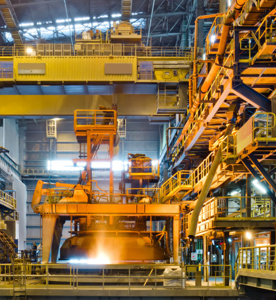
As in the rest of the world, Ukraine's heavy industry has gone through a painful transformation over the last decade. However, the lighter end of the spectrum, which includes such areas electrical equipment or textiles, has seen rapid growth.
Manufacturing has provided a major boost to Ukraine's exports. Some of the fastest rising categories have been textiles and clothing, for which exports have grown by 33 and 38 percent over the 2015-2018 period, respectively.
In 2018, Amsterdam-based HEAD, a sports and clothing company, bought a plot in Vinnytsia for $1.3 million to build one of the world's largest winter sportswear production plants.
According to national investment agency UkraineInvest chairman Daniel Bilak, "attracting an investor of this caliber is a major achievement for Ukraine. It not only creates high value production and jobs, it helps position Ukraine as an attractive investment destination for global brands."
Improved connections to Europe, as well as the EU-Ukraine free trade area that entered in force in September 2017, have made Ukraine an increasingly interesting platform for production targeting the European market.
One of the challenges for the sector, however, has been an exodus of workers, primarily to nearby Poland. As a result, salaries have grown, particularly for larger enterprises, with 10 to 20 percent increases across different industries.
Manufacturing has provided a major boost to Ukraine's exports. Some of the fastest rising categories have been textiles and clothing, for which exports have grown by 33 and 38 percent over the 2015-2018 period, respectively.
In 2018, Amsterdam-based HEAD, a sports and clothing company, bought a plot in Vinnytsia for $1.3 million to build one of the world's largest winter sportswear production plants.
According to national investment agency UkraineInvest chairman Daniel Bilak, "attracting an investor of this caliber is a major achievement for Ukraine. It not only creates high value production and jobs, it helps position Ukraine as an attractive investment destination for global brands."
Improved connections to Europe, as well as the EU-Ukraine free trade area that entered in force in September 2017, have made Ukraine an increasingly interesting platform for production targeting the European market.
One of the challenges for the sector, however, has been an exodus of workers, primarily to nearby Poland. As a result, salaries have grown, particularly for larger enterprises, with 10 to 20 percent increases across different industries.
Traditionally one of the biggest sectors in Ukraine – employing up to a quarter of the population according to government figures – manufacturing comprises and wide and diverse set of subsegments.

Defense and aerospace

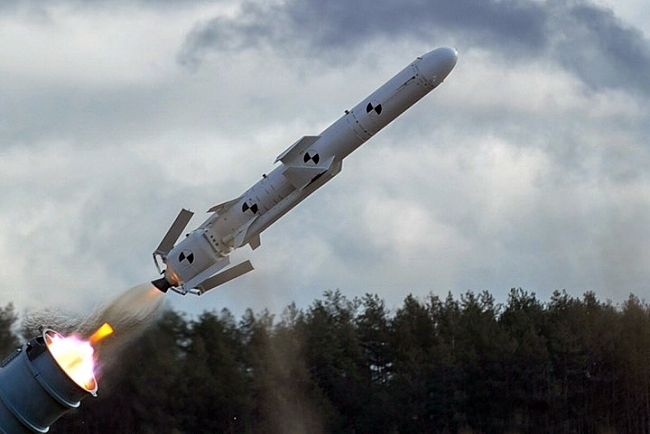
Once a core element of the post-Soviet military and space industry, since 2014 and the start of the Donbas war, Ukraine has diversified its network of partnerships, attracting international investments to its defense and aerospace sector.
Ukraine's current defense and aerospace capabilities stem from its historical role as part of the Soviet arms industry. Among others, Ukrainian facilities produced tanks (including the famous T-34 that is said to have won World War II for the Red Army), rockets and missiles, small arms and engines that were absolutely critical.
As a result, Ukraine regularly figured among the world's top arms exporters, according data compiled by the Stockholm International Peace Research Institute, particularly in the 2009-2013 period. However, since ties with Russian industry started ramping down post-2014, the value of Ukraine's military exports dropped by 47 percent in 2014-2018 compared to the previous period. As a result, the country's ranking followed, coming down to 14th place worldwide.
Nonetheless, companies from communist times continue to play a major role. Motor Sich, based in the south-eastern Ukrainian city of Zaporizhia, is one of the biggest engine manufacturers for helicopters and airplanes. The rocket manufacturer Yuzmash and sister research and engineering institution KB Yuzhnoe, both based in nearby Dnipro, developed key nuclear missiles for Soviet defense, but now partner with over 20 countries, ranging from the United States to Indonesia to develop satellite and aerospace solutions.
While much of the growth is linked directly to the war in Eastern Ukraine, there are also many cases of international interest in the country's capabilities. Among others, Boeing has start working with Antonov, producer of the world's largest plane, to reduce reliance on Russia. Meanwhile, China has shown interest in Motor Sich in hopes to accelerate the development of its own heavy lift helicopter program, with a deal confirmed in February 2019.
As a result, Ukraine regularly figured among the world's top arms exporters, according data compiled by the Stockholm International Peace Research Institute, particularly in the 2009-2013 period. However, since ties with Russian industry started ramping down post-2014, the value of Ukraine's military exports dropped by 47 percent in 2014-2018 compared to the previous period. As a result, the country's ranking followed, coming down to 14th place worldwide.
Nonetheless, companies from communist times continue to play a major role. Motor Sich, based in the south-eastern Ukrainian city of Zaporizhia, is one of the biggest engine manufacturers for helicopters and airplanes. The rocket manufacturer Yuzmash and sister research and engineering institution KB Yuzhnoe, both based in nearby Dnipro, developed key nuclear missiles for Soviet defense, but now partner with over 20 countries, ranging from the United States to Indonesia to develop satellite and aerospace solutions.
While much of the growth is linked directly to the war in Eastern Ukraine, there are also many cases of international interest in the country's capabilities. Among others, Boeing has start working with Antonov, producer of the world's largest plane, to reduce reliance on Russia. Meanwhile, China has shown interest in Motor Sich in hopes to accelerate the development of its own heavy lift helicopter program, with a deal confirmed in February 2019.

Retail and wholesale
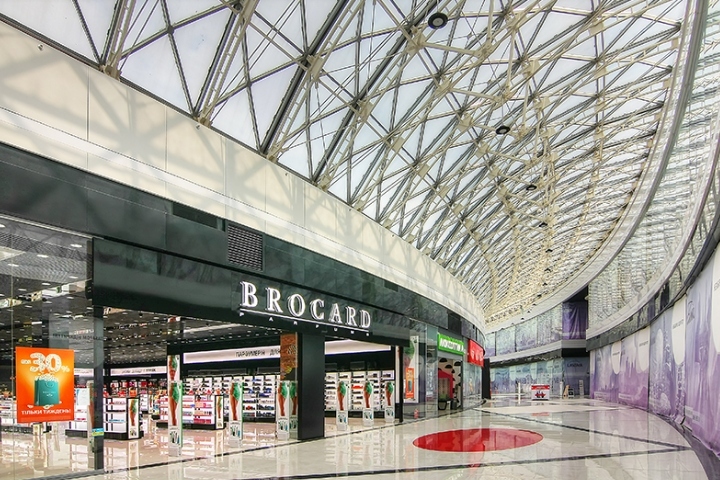
The EU-Ukraine trade agreement, which liberalized trade between Ukraine and the world's biggest single market, has driven up sales across Ukraine's retail sector. This has been further bolstered by a recovery in disposable incomes, which rose 10 percent in 2018 after taking a hit in the 2014.
Retail trade grew 6.8 percent in 2018, speeding up to 7.2 in February this year. This has been a boon for both local and international chains operating in Ukraine. To benefit from the trend France's Auchan Group, one of the largest international retailers that first entered the Ukrainian market in 2008, decided in 2017 to acquire the Karavan network of shops operating in Kyiv, Kharkiv, Zhytomyr, Dnipro and Chernivtsi.
Nor has that been Auchan's only expansion into the Ukrainian market. French sportswear store Decathlon, part of Auchan group, recently announced it will be opening two stores in Kyiv before looking further across the country.
"We have a plan, but it is still variable. This year we may open another store in Kyiv. Next year, new stores will also be in Kyiv. In 2021, the Decathlon brand will go beyond the city to Odesa, Lviv and possibly other major cities," CEO at Decathlon Ukraine Florent Guieu told a press conference in March.
Retail sales have also been bolstered by growth in other sectors. Oleksandr Hereha, the head of Epicenter K, Ukraine's largest chain of stores, which specializes in home and garden supplies, sees a huge opportunity to expand into agricultural supplies. According to Hereha, investments in 2019 could generate sales of $75 million a year "as a minimum".
Yet the biggest trend has clearly been e-commerce. Together with the brick and mortar store Decathlon opened an online version, seeking to leverage the rising popularity of online shopping in Ukraine.
Nor has that been Auchan's only expansion into the Ukrainian market. French sportswear store Decathlon, part of Auchan group, recently announced it will be opening two stores in Kyiv before looking further across the country.
"We have a plan, but it is still variable. This year we may open another store in Kyiv. Next year, new stores will also be in Kyiv. In 2021, the Decathlon brand will go beyond the city to Odesa, Lviv and possibly other major cities," CEO at Decathlon Ukraine Florent Guieu told a press conference in March.
Retail sales have also been bolstered by growth in other sectors. Oleksandr Hereha, the head of Epicenter K, Ukraine's largest chain of stores, which specializes in home and garden supplies, sees a huge opportunity to expand into agricultural supplies. According to Hereha, investments in 2019 could generate sales of $75 million a year "as a minimum".
Yet the biggest trend has clearly been e-commerce. Together with the brick and mortar store Decathlon opened an online version, seeking to leverage the rising popularity of online shopping in Ukraine.
In 2018 Ukraine's e-commerce sector grew 31 percent year on year – the second fastest growth in Europe, second only to Romania.
In fact, the sector's growth presents a challenge for retailers, as infrastructure has not kept up pace. In 2018, Ukraine's largest retailer Rozetka.ua opened five new stores on Kyiv's right bank, but lacked the warehousing facilities to supply them.
"Ukraine is growing fast enough — this is good — but the problem is that the infrastructure is not keeping up with such growth," Vladislav Chechetkin, co-owner of Rozetka, told Interfax-Ukraine. "The vacancy of the warehouses is zero. Therefore, if you want a warehouse on the right bank, this means that you have to find (land), get approval, permission to build ... is a significant time lag."
In fact, the sector's growth presents a challenge for retailers, as infrastructure has not kept up pace. In 2018, Ukraine's largest retailer Rozetka.ua opened five new stores on Kyiv's right bank, but lacked the warehousing facilities to supply them.
"Ukraine is growing fast enough — this is good — but the problem is that the infrastructure is not keeping up with such growth," Vladislav Chechetkin, co-owner of Rozetka, told Interfax-Ukraine. "The vacancy of the warehouses is zero. Therefore, if you want a warehouse on the right bank, this means that you have to find (land), get approval, permission to build ... is a significant time lag."

Healthcare

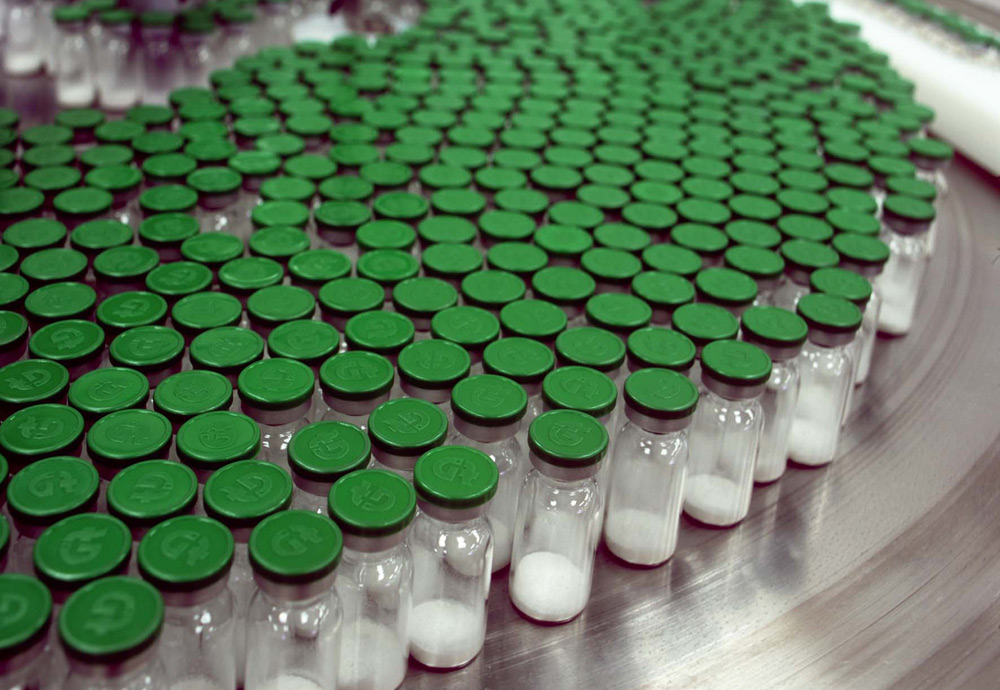
An aging population has meant that health plays an increasingly important role for Ukrainians. For many years, this has meant a focus on transforming the large but inefficient domain of public healthcare. However, the rise of real disposable incomes (up 10 percent in 2018) and a growing health consciousness have shifted the population toward private health care.
Private medicine in Ukraine has been growing fast, with the number of private health facilities growing from 4,255 in 2016 to 4,991 in 2018, according to the Ministry of Health. The market has grown even faster: over the same two years, total market turnover has gone up some 60 percent, from $0.5 billion to $0.8 billion, according to advisory firm Pro-Consulting.
Some of the first sizable market deals have followed. Most recently, Dobrobut, one of the largest private medical networks in the capital Kyiv, has expressed interest in buying a 50 percent stake in competitor network Boris, for an amount that experts estimate to be around $30 million.
Following its expansion to open six new clinics over the past four years (for an estimated cost of $16 million), the deal could make Dobrobut, owned by Cyprus-based Satumco Limited, the leading national player.
Some of the first sizable market deals have followed. Most recently, Dobrobut, one of the largest private medical networks in the capital Kyiv, has expressed interest in buying a 50 percent stake in competitor network Boris, for an amount that experts estimate to be around $30 million.
Following its expansion to open six new clinics over the past four years (for an estimated cost of $16 million), the deal could make Dobrobut, owned by Cyprus-based Satumco Limited, the leading national player.

Education
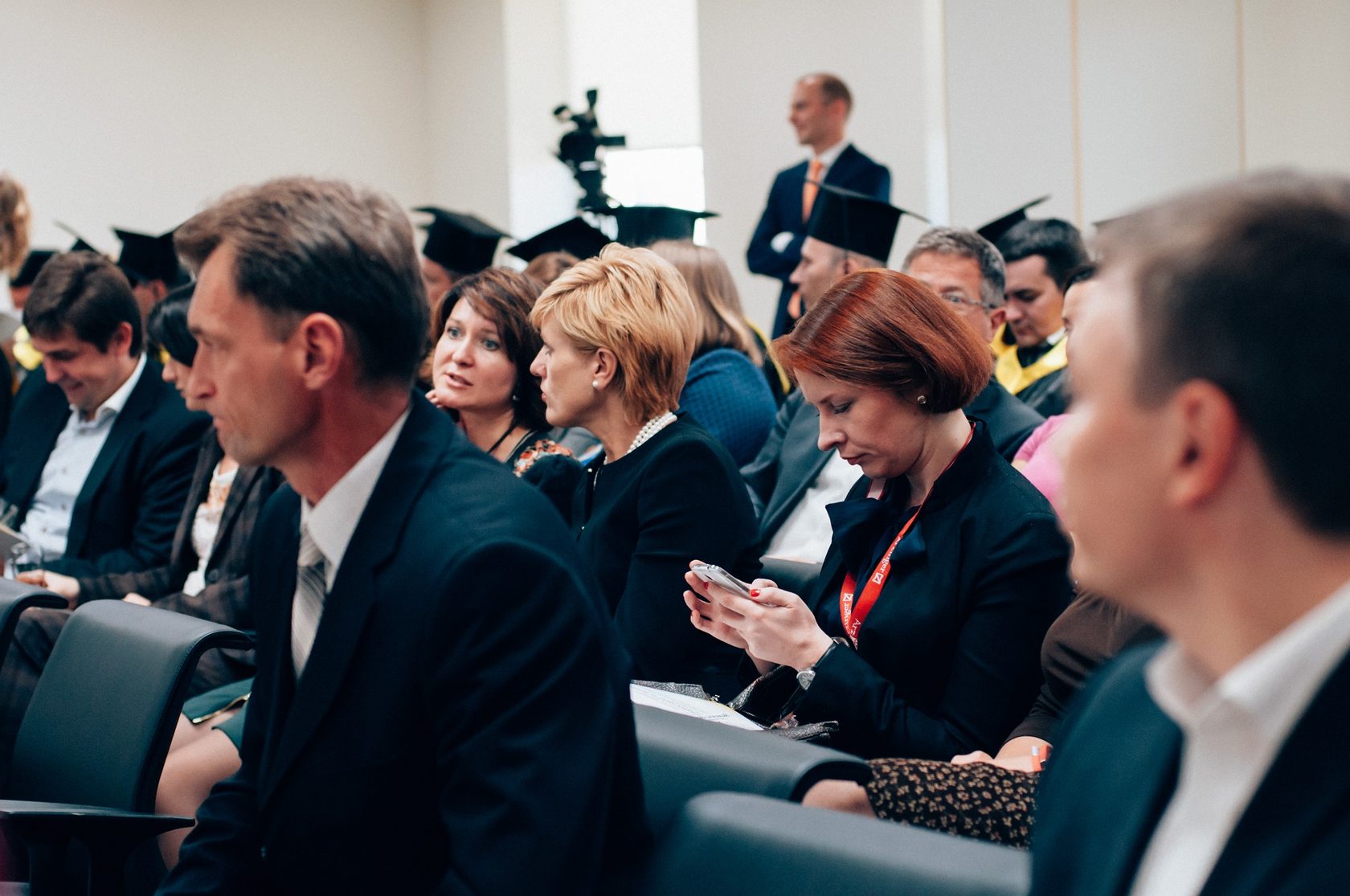
The 2014 revolution fundamentally transformed Ukraine's political scene, shifting the country toward a Western model of development. To reform the economy and policy-making field, however, the country needed to quickly build a pool of talent adhering to Western educational standards.
As a result, the field has seen explosive growth in the number of corporate and government training programs, not to mention numerous international educational efforts such as the Ukrainian Emerging Leaders Program from Stanford University.
The diverse field ranges educational support provided by the international community, traditional private and non-profit educational institutions, and corporate academies. A prime example of the latter is Academy DTEK, which works with and trains almost 30 organizations including the Ministry of Finance and or Ukrposhta.
"Academy DTEK is becoming an innovative educational business platform open to business representatives, the public sector, the public, and international partners," Oleksandr Kucherenko, the Director for Sustainable Development at DTEK, said at a press conference.
On the public side of things, the big change since 2014 has come from programs supported by the international community. Among many others, include public sector reform, decentralization, and e-governance.
The diverse field ranges educational support provided by the international community, traditional private and non-profit educational institutions, and corporate academies. A prime example of the latter is Academy DTEK, which works with and trains almost 30 organizations including the Ministry of Finance and or Ukrposhta.
"Academy DTEK is becoming an innovative educational business platform open to business representatives, the public sector, the public, and international partners," Oleksandr Kucherenko, the Director for Sustainable Development at DTEK, said at a press conference.
On the public side of things, the big change since 2014 has come from programs supported by the international community. Among many others, include public sector reform, decentralization, and e-governance.
SIDA, the Swedish aid agency, has by itself committed over $28 million just in 2018, much of it going to educational programs.
According to a recent World Bank study, however, the biggest opportunity would be to reform public education, which continues to lag with crumbling infrastructure and demotivated faculties.
"Sensible planning and resource management is essential for the country to build the modern education system it needs to become internationally competitive and prosperous," the World Bank report needs, advocating that in-depth transformation of the sector could unlock further development for Ukraine.

IT services and telecoms
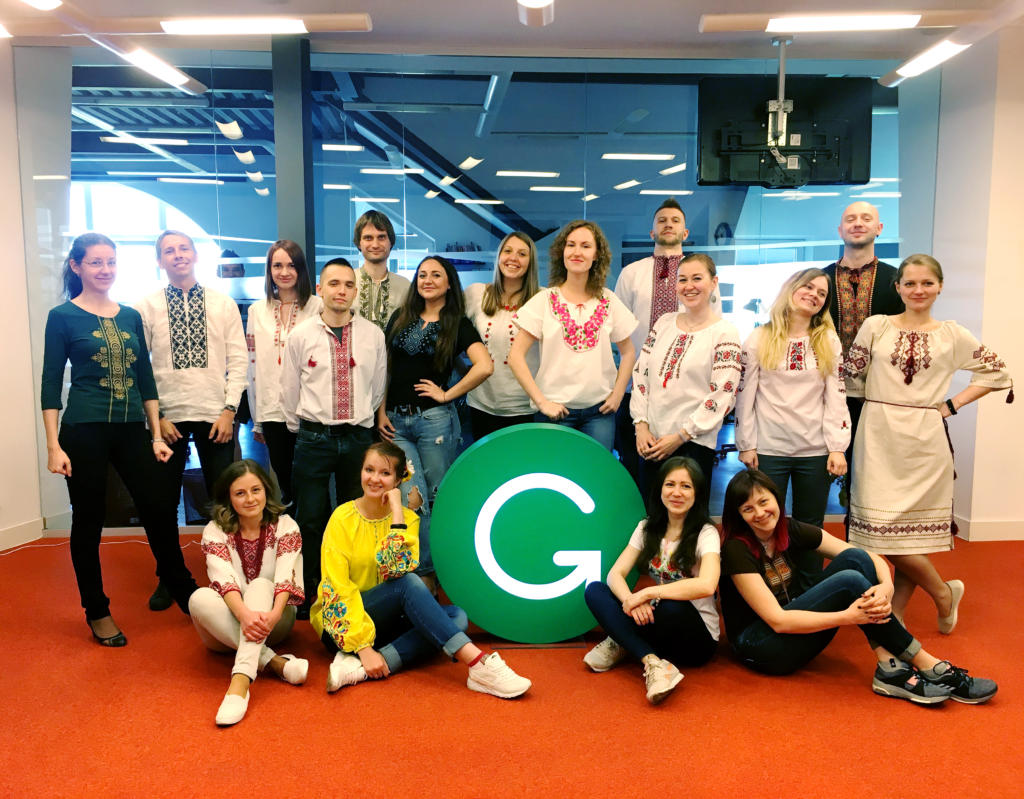

Over the past four years Ukraine has been part of the Eastern European boom in IT services. Together with Poland, Romania and Belarus, the region accounts for over 470 companies generating over $5 billion in annual revenues, according to a recent study by venture capital firm Aventures Capital, IT investor Aventis Capital, and the Capital Times news media.
Ukraine is the biggest piece of the puzzle, according to the report, accounting for 245 companies generating almost $2.1 billion in revenues. An educational system focused on mathematics, physics and engineers – one of the few positive fallouts from Communist times – has helped create one of the region's biggest talent pool. Second only to Poland, which in recent years has actively sought to recruit Ukrainian workers, the nation counts over 170,000 IT specialists.
This has allowed the country to become a top performer in the field, with over 20 percent of the leading Fortune 500 companies having offices in Ukraine, according to a recent study by Unit.city a Kyiv-based innovation park.
"When thinking about outsourcing strategy and choosing a service provider, business are looking for a combination of competence, both technical and industry-wise, capabilities, access to talent and a focus on client's business needs," claims Vitaly Sedler, CEO and co-founder of Intellias, a software engineering company that ranked among Ukraine's top 5 fastest growing large IT firm.
But the IT sector is not all about outsourcing, with a number of globally successful start-ups having found their home in Ukraine. The biggest recent success stories include Grammarly, an online grammar- and spell-checker that recently signed a deal to support Google Docs, and Gitlab a development and source code management provider.
In 2017-2018, both Grammarly and Gitlab raised $110 million in seed rounds, boosting their valuations. Jeremy Philips, a general partner at Spark Capital, a venture capital firm that invested in Grammarly told TechCrunch website that they decided to put their money in the Ukrainian firm because they "love the product and the mission of improving the way people communicate."
This has allowed the country to become a top performer in the field, with over 20 percent of the leading Fortune 500 companies having offices in Ukraine, according to a recent study by Unit.city a Kyiv-based innovation park.
"When thinking about outsourcing strategy and choosing a service provider, business are looking for a combination of competence, both technical and industry-wise, capabilities, access to talent and a focus on client's business needs," claims Vitaly Sedler, CEO and co-founder of Intellias, a software engineering company that ranked among Ukraine's top 5 fastest growing large IT firm.
But the IT sector is not all about outsourcing, with a number of globally successful start-ups having found their home in Ukraine. The biggest recent success stories include Grammarly, an online grammar- and spell-checker that recently signed a deal to support Google Docs, and Gitlab a development and source code management provider.
In 2017-2018, both Grammarly and Gitlab raised $110 million in seed rounds, boosting their valuations. Jeremy Philips, a general partner at Spark Capital, a venture capital firm that invested in Grammarly told TechCrunch website that they decided to put their money in the Ukrainian firm because they "love the product and the mission of improving the way people communicate."

Professional services

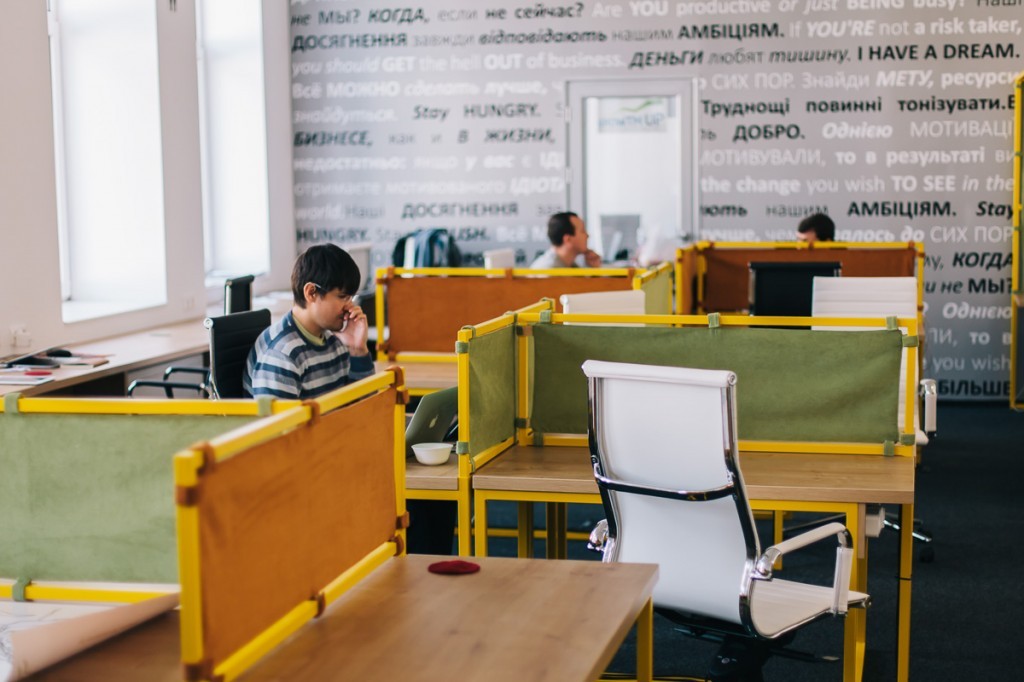
Growth in Ukrainian professional services is driven by both rising local demand, as the country continues to modernize and reform, as well as global trends in outsourcing. In particular Business Process Outsourcing (BPO), which focuses on moving back- and mid-office operations – administrative, support, or non-client facing roles – to less expensive locations, has grown into a huge market over the past two decades.
Once focused on large, cheap and English-speaking India, the industry has been bringing operations "closer to home," notably to improve communication between head and support offices. As a result, jobs have shifted to such countries as Brazil, Costa Risa, Poland or Ukraine.
According to Volodymyr Yumashev, a partner at global consultancy Deloitte, Ukraine's key advantages are the labor availability and costs, as well as proximity to key Western European markets. With a workforce exceeding 12 million advanced degree holders and 1.3 million students in the 2017/2018 academic year, including 247,000 and 104,000 students of economics and technology sciences (two key fields for BPO), Ukraine has one of the highest indicators in the region. Moreover, adds Yumashev, "high-qualified workers in Ukraine have a reasonable level of renumeration."
This has motivated such companies as global audit and advisory firm PwC, to open a center in Ukraine, joining the ranks of such firms as AB InBev, Gruma and Nestle. Their Lviv office is 350 strong, supporting the delivery of PwC services such as audit, advisory and tax.
"The location was selected after thorough analysis. Lviv met all our expectations: access to highly-educated local talent, convenient location, open business environment, significant opportunities for innovation, not to mention the growing role of Ukraine in the regional business community," said Richard Pollard, Country Managing Partner of PwC Ukraine
At present, the biggest challenges are getting work permits for foreigners and related bureaucracy, as well as a general lack of information about Ukraine. "The key bottleneck now is in the fact that Ukraine is unknown. Unknown is scary," Yumashev said.
If these challenges are overcome, the prospects can be very positive for Ukraine's role in BPO. According to Yumashev the BPO field will require an additional 265,000 jobs by 2020. "We have the opportunity to get a decent fraction of them," he said.
According to Volodymyr Yumashev, a partner at global consultancy Deloitte, Ukraine's key advantages are the labor availability and costs, as well as proximity to key Western European markets. With a workforce exceeding 12 million advanced degree holders and 1.3 million students in the 2017/2018 academic year, including 247,000 and 104,000 students of economics and technology sciences (two key fields for BPO), Ukraine has one of the highest indicators in the region. Moreover, adds Yumashev, "high-qualified workers in Ukraine have a reasonable level of renumeration."
This has motivated such companies as global audit and advisory firm PwC, to open a center in Ukraine, joining the ranks of such firms as AB InBev, Gruma and Nestle. Their Lviv office is 350 strong, supporting the delivery of PwC services such as audit, advisory and tax.
"The location was selected after thorough analysis. Lviv met all our expectations: access to highly-educated local talent, convenient location, open business environment, significant opportunities for innovation, not to mention the growing role of Ukraine in the regional business community," said Richard Pollard, Country Managing Partner of PwC Ukraine
At present, the biggest challenges are getting work permits for foreigners and related bureaucracy, as well as a general lack of information about Ukraine. "The key bottleneck now is in the fact that Ukraine is unknown. Unknown is scary," Yumashev said.
If these challenges are overcome, the prospects can be very positive for Ukraine's role in BPO. According to Yumashev the BPO field will require an additional 265,000 jobs by 2020. "We have the opportunity to get a decent fraction of them," he said.

Fashion, arts and cultural products

One of the brightest spots on Ukraine's economic map in recent years is cultural products. Albeit starting from a low base, fashion in particular has had a great run with double-digit growth in recent years.
Few products are as iconic as the vyshyvanka, a traditional embroidered shirt that many in Ukraine wear for celebrations and festive occasions. Since 2014, these have also been making appearances in high fashion capitals such as New York or Paris – in 2016 designer Yulia Magdych's vyshyvanka-inspired creations appeared in the prestigious Selfridges shop in central London.
That year, famed style magazine Vogue devoted an article to outfit on May 19, also known as National Vyshyvanka Day in Ukraine.
The success of Ukraine's fashion landscape market is not limited to traditional garbs. Indeed, Ukrainian designers have had a strong run, with a growing presence of such designers as Olena Dats, Roksolana Bogutska or Ksenia Schnaider on the international stage.
That year, famed style magazine Vogue devoted an article to outfit on May 19, also known as National Vyshyvanka Day in Ukraine.
The success of Ukraine's fashion landscape market is not limited to traditional garbs. Indeed, Ukrainian designers have had a strong run, with a growing presence of such designers as Olena Dats, Roksolana Bogutska or Ksenia Schnaider on the international stage.
These have been sported by a growing number of global stars. US supermodel Bella Hadid was spotted wearing a shorts-meets-skinny-jeans hybrid from Schnaider in 2017, while last year's Milan Fashion Week – one of the world's premiere fashion events – saw actress and model Emily Ratajkowski wearing a dress by Svitlana Bevza.
The best thing, for Bevza, was that Ratajkowski's decision to wear the dress – typically a well-orchestrated opportunity to promote one's products – was completely unexpected.
"I'm pleased to see a beautiful girl, who is so popular in the United States, in my dress. How exactly she got this dress I do not know," Bevza told the Kyiv Post.
The best thing, for Bevza, was that Ratajkowski's decision to wear the dress – typically a well-orchestrated opportunity to promote one's products – was completely unexpected.
"I'm pleased to see a beautiful girl, who is so popular in the United States, in my dress. How exactly she got this dress I do not know," Bevza told the Kyiv Post.

About the Project
The Kyiv Post is following global trends and has launched a division in the commercial department responsible for creating compelling branded content, sometimes referred to as native advertising.
We aim to set the standard for great branded content, and keep the Kyiv Post strong so that it can continue to serve our community, and Ukraine, as its global voice.
We aim to set the standard for great branded content, and keep the Kyiv Post strong so that it can continue to serve our community, and Ukraine, as its global voice.
CONTACTS
Design by Applet.Studio
